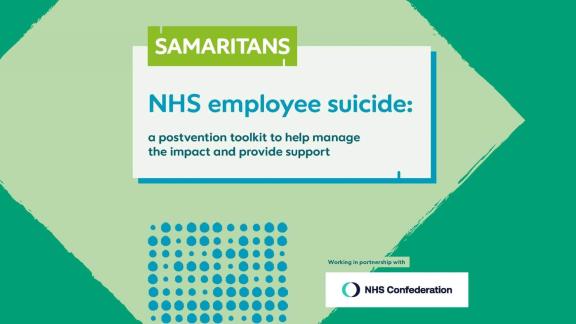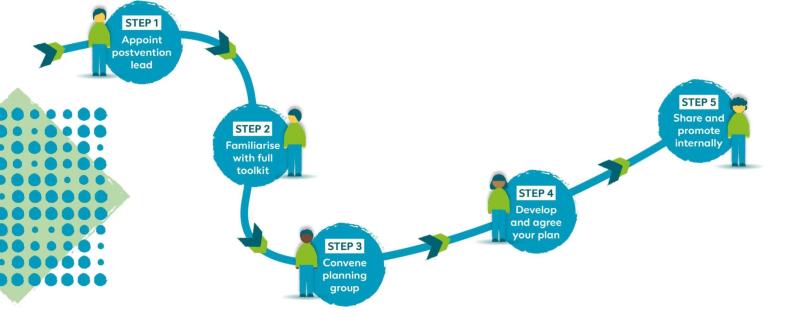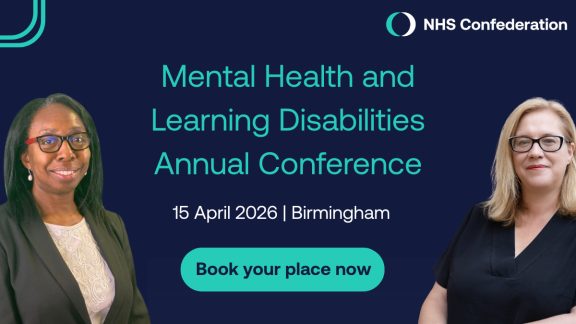NHS employee suicide: a postvention toolkit to help manage the impact and provide support

We must do as much as we can to prevent suicide in NHS organisations. When suicide does happen, this toolkit is designed to help NHS organisations, particularly leaders in human resources, occupational health and health and wellbeing, to develop and implement a process to manage the impact of an employee suicide on colleagues. This includes students on placements in NHS organisations. Support after a suicide is known as postvention.
Advice here may also be adapted to support those in the workforce who lose a family member or close friend to suicide. You may find the toolkit useful when supporting colleagues after a sudden death of any cause. It has been informed by real experiences of colleagues across the NHS.
It’s important to say from the outset that the postvention response will be challenging for everyone involved. We recommend that responsibility for using this toolkit be shared by more than one person. If you are affected, share your concerns with colleagues and managers and ask for support too.
What is postvention?
Postvention refers to the actions taken to provide support after someone dies by suicide. There is no one right way to respond to suicide, but effective postvention planning can ensure that timely and appropriate care and support is provided. In addition, there is no single or right way to grieve, so open dialogue with colleagues is essential to put in place the most appropriate support for each employee. This can help individuals with their grief, manage the impact on the organisation and reduce the risk of further deaths by suicide.
Leadership plays a critical role in setting the tone for how the rest of the staff will respond to a suicide. Building a culture of openness around suicide, as well as general mental health and wellbeing, is one way that support after a suicide can be most effective. Talking safely and responsibly about what has happened will not increase the risk of imitational suicides within a workforce; handled well it can be critical to coming to terms with the death and moving forward.
Why is postvention important?
Evidence shows that people who have been bereaved or affected by suicide are almost three times more at risk of suicidal ideation1. It is estimated that as many as 1 in 10 people attempt suicide after losing someone to suicide and 8% drop out of work or education2. The impact of suicide can be far-reaching, with as many as 135 people affected by one death by suicide.
Bereavement by suicide is complicated, unpredictable, and it can be devastating. Therefore, it is important to have a clear and supportive postvention plan in place in workplaces and all other environments where people are in close contact, such as schools and colleges.
How to use the toolkit
Each organisation will have its own structure and process for managing and supporting wellbeing. This toolkit provides an overview of how you might roll out a postvention process within your own place of work and is based on learnings shared with us by NHS colleagues.
Here’s how to get started.
- Appoint a senior lead to oversee the development of the postvention plan, who should report into the executive board and have decision-making responsibility.
- Postvention lead reads the toolkit and familiarises themselves with all aspects of postvention in the immediate, short, medium and long-term following a death by suicide.
- Postvention lead convenes a planning group to develop your organisation’s specific postvention plan. We have outlined some guidelines on this in Section 2, but the details will be unique to your place of work.
- Postvention plan is developed and agreed, with key documents, checklists and signposting made accessible to all relevant staff via the organisation’s usual internal channels. It is recommended that the plan is signed off at executive level.

Further information and resources
Useful resources
- Information on the impact of suicide and how employers can best support their staff through preventative and postventative measures.
- The emotional wellbeing toolkit explains the contributors to decreased emotional wellbeing and shows you how to encourage improvements -
- Guide for managers on sickness absence.
- Tools and resources to help you make positive improvements to mental wellbeing in the workplace.
- Supporting mental health staff following the death of a patient by suicide: a framework by Royal College of Psychiatrists.
- A framework for postvention in primary care from the Society of Occupational Medicine.
- Help is at Hand, a resource for people bereaved through suicide or other unexplained death, and for those helping them.
Helpful organisations
- Samaritans website has a range of useful resources, training programmes, and a Media Advisory Team who can advise on concerns around media interest and involvement.
- The Support after Suicide Partnership’s website has information and resources on bereavement after suicide.
- Survivors of Bereavement by Suicide (SOBS) is a national charity providing dedicated support to adults who have been bereaved by suicide.
- Winston’s Wish is the UK’s childhood bereavement charity, supporting children and their families after the death of a parent or sibling.
- At a Loss can signpost you to local support groups and services, including those that specialise in support after suicide.



